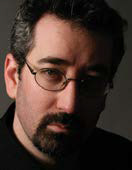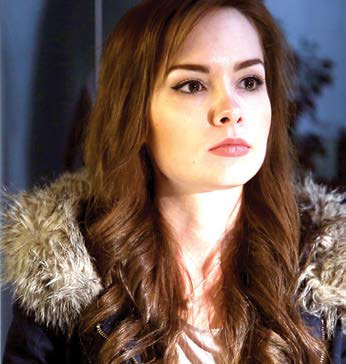The Composition Of Sunlight

JAY HOLBEN I was recently invited to give a guest lecture on narrative lighting for the Bay Area Professional Videographer’s Association in San Jose, Calif. During the discussion, a member brought up the question of how to create believable looking sunlight.
We all know that the color temperature of daylight is 5,600 K (on average), but that 5,600 K is actually derived from a combination of direct sunlight and ambient skylight. It’s the two distinct sources that create the daylight we see every day; and that’s the key to creating believable artificial sunlight: two sources.
Fig. 1: The late afternoon sunlight coming through closed curtains in the author’s living room. When I was working on my book, “A Shot in the Dark,” I sat down with my good friend, Dr. Jeffrey Crane, an astronomer, and talked to him about the real color of the sun. As with most things, it was a much more complex discussion than one might imagine. The color that we see of the sun itself varies greatly depending on your location on earth, the atmospheric conditions, weather, and the time of day.
IT VARIES
Those of us who shoot video out in the real world on a constant basis know that sunlight is rarely ever 5,600 K. It varies during the course of the day and it varies based on cloud coverage and atmospheric pollution. I’ve seen desert sandstorms in the distance that drop the color temperature of the sun so drastically that so we couldn’t keep shooting.
The key to understanding how to create believable daylight is in understanding the two different color sources: the direct light from the sun itself and the ambient skylight.
I was pondering a way to illustrate this in nature when I noticed the late afternoon sunlight coming through closed curtains in my living room. One portion of the curtain was a bright warm glow, the other was a very cool and dimmer glow. Right there I had the exact illustration of the two colors of sunlight, (Fig. 1).

Fig. 2: Combining two sources—cool, soft overhead bounce, and more direct clean tungsten bounce—creates an absolutely believable daylight look. Generally I’ll use two sources when trying to create daylight—whether exterior or interior. The first is ambient skylight. This is, generally, a cooler color temperature than my key “sun.” During the demonstration in San Jose for the Bay Area Professional Videographers, I used a 650 Watt Arri Fresnel with 1/4 CTB bounced into a white textured ceiling as my ambient skylight and an Arri 300 Watt Fresnel, clean, as my direct sunlight. I bounced the 300 Watt unit into a counter in the kitchen to give a little uplight glow on Amber Myer, the talent modeling for the demonstration. With just the edge of the 300 Watt fixture’s field angle hitting Amber below her shoulder, it put a hot source on her torso. The combination of the two sources—cool, soft overhead bounce, and more direct clean tungsten bounce—created an absolutely believable daylight look (Fig. 2).
The professional video industry's #1 source for news, trends and product and tech information. Sign up below.
To accentuate this look, I aimed the 650 Watt bounce to be just above where the 300 Watt Fresnel was. This way the bounce had some general directionality from the same direction as the hot spot. It made it feel like both sources were coming from the same large window off-camera. There’s also a 150 Watt Fresnel from off-camera pointing right at the microwave oven behind Amber. Without this, that was a dark area in the frame that belied the daylight look.

Fig.3: A shot of actress Lisa Jay taken long after the sun has set I used this same technique in a small project called “Tranquility, Inc.” for director Jamie Neese. Fig. 3 shows a shot of actress Lisa Jay taken long after the sun had set.
Recreating late-afternoon sunlight, I used a 650 Watt Fresnel bounced low into the white door to her right to create the bright sunlight and a 300 Watt Fresnel (the same light kit I used in San Jose) bounced into the ceiling above (and in front of) Lisa. Here, because the hot “sun” is behind her, I bounced the cooler fill in front of her to give the feeling of sun coming through the window and bouncing off the wall in front of her for the soft fill.
It’s the combination of these two sources—a soft bounce, generally cooler in color temperature, to mimic ambient daylight, and a more direct, generally warmer, source to mimic direct sunlight—that serve to create a very believable natural daylight look.
Jay Holben is the technical editor of Digital Video and a contributor to Government Video. He’s also the author of the book “A Shot in the Dark: A Creative DIY Guide to Digital Video Lighting on (Almost) No Budget.” He can be contacted via TV Technology.
